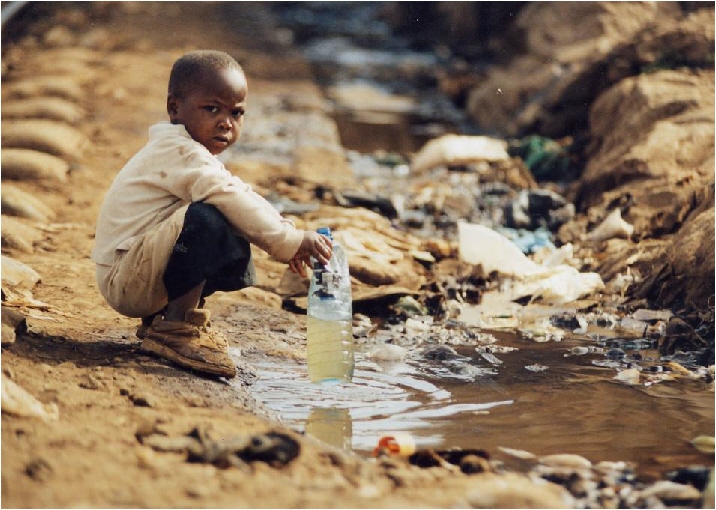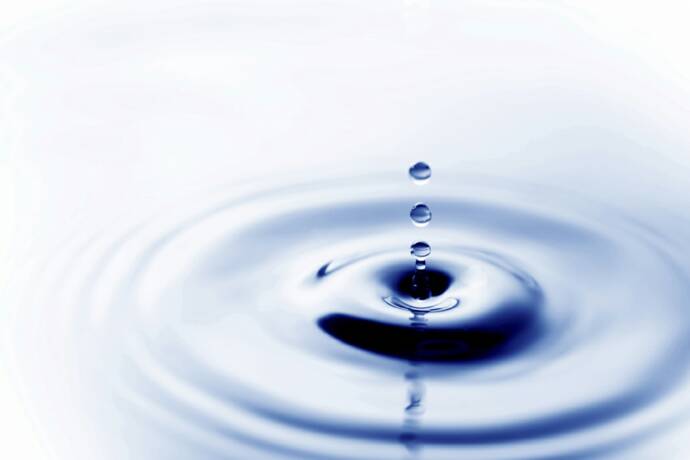
[Enter your text here.]

With nearly three-quarters of the earth covered in water, it would seem unlikely that there is water scarcity at all. However, water scarcity does not have as much to do with the availability of “any” water as it does with the availability of potable, or usable, water. With worldwide water predominantly utilized for corporate consumption and less than 1% of available water from fresh water sources (such as snowcaps or glaciers), according to the CDC, over 1 billion people are currently forced to use water from hazardous resources for cooking, bathing and consumption. Approximately half of this vulnerable population are children.
Water-Related Diseases
Although water-related diseases have largely been eliminated in wealthier nations, they remain a major concern in much of the developing world. While data are incomplete, the World Health Organization estimated in the 2000 assessment that there are four billion cases of diarrhea each year in addition to millions of other cases of illness associated with the lack of access to clean water. Since many illnesses are undiagnosed and unreported, the true extent of these diseases is unknown. Water-related diseases are typically placed in four classes: waterborne, water-washed, water-based, and water-related insect vectors. The first three are most clearly associated with lack of improved domestic water supply.
Waterborne diseases include those where transmission occurs by drinking contaminated water, particularly contamination by pathogens transmitted from human excreta. These include most of the enteric and diarrheal diseases caused by bacteria and viruses. Waterborne diseases also include typhoid and over 30 species of parasites that infect the human intestines. Seven of these are distributed globally or cause serious illness: ameobiasis, giardiasis, Taenia solium taeniasis, ascariasis, hookworm, trichuriasis, and strongyloidiasis. Table 2 lists the current estimates of the prevalence of these diseases. Evidence also suggests that waterborne disease contributes to background rates of diseases not detected or reported explicitly as outbreaks.
Water-washed diseases occur when there is insufficient clean water for washing and
personal hygiene, or when there is contact with contaminated water. These include
trachoma, typhus, and diarrheal diseases that can be passed from person to person.
Water-based diseases come from hosts that live in water or require water for part of their life cycle. These diseases are usually passed to humans when they drink contaminated water or use it for washing. The most widespread examples in this category are schistosomiasis and dracunculiasis. Schistosomiasis currently infects 200 million people in 70 countries.
Water-related insect vectors – includes those diseases spread by insects that breed or feed near contaminated water, such as malaria, onchocerciasis, and dengue fever. These diseases are not typically associated with lack of access to clean drinking water or sanitation services, and they are not included here in estimates of water-related deaths. It must be noted, however, that their spread is often facilitated by the construction of large-scale water systems that create conditions favorable to their hosts.

The Domestic Impact:
The failure to provide safe drinking water and adequate sanitation services to all people is perhaps the greatest development failure of the 20th century. The most egregious consequence of this failure is the high rate of mortality among young children from preventable water-related diseases.
Source - http://www.pacinst.org/
reports/water_related_deaths/
water_related_deaths_report.pdf

Source - http://www.pacinst.org/reports/water_related_deaths/water_related_deaths_report.pdf
Alternative Energy Specialist
Promoting Renewable Energy Resources





